This post may contain affiliate links. Read our disclosure policy.
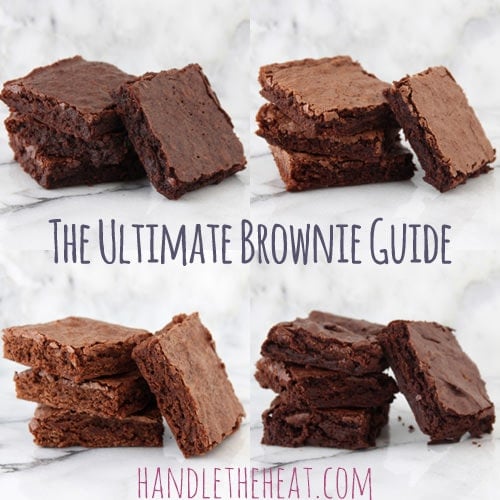
If you’re a frequent Handle the Heat reader you probably remember my Ultimate Guide to Chocolate Chip Cookie post, and part 2, and part 3. Those posts were so fun and popular that I’ve created even more Ultimate Guide posts that deconstruct the ingredients and techniques from your favorite recipes and foods so we can all learn why and how things happen in the kitchen.
Brownies come in many forms but they deservedly require their own category in the world of desserts because they aren’t quite cakes, cookies, or fudge. Yet, brownies are often described as being cakey, chewy, or fudgy. What makes for the perfect brownie is a matter of personal preference and with the thousands of brownie recipes that exist, it can be hard to find your version of the perfect brownie.
With the earliest published brownie recipes spanning back to the early 1900s, it’s no surprise that there are countless variations to this delightful treat. Whether they are made from a box or from scratch, whether they have nuts, chocolate chips, or frosting, or whether they are cakey, chewy, or fudgy, the recipe options are endless.
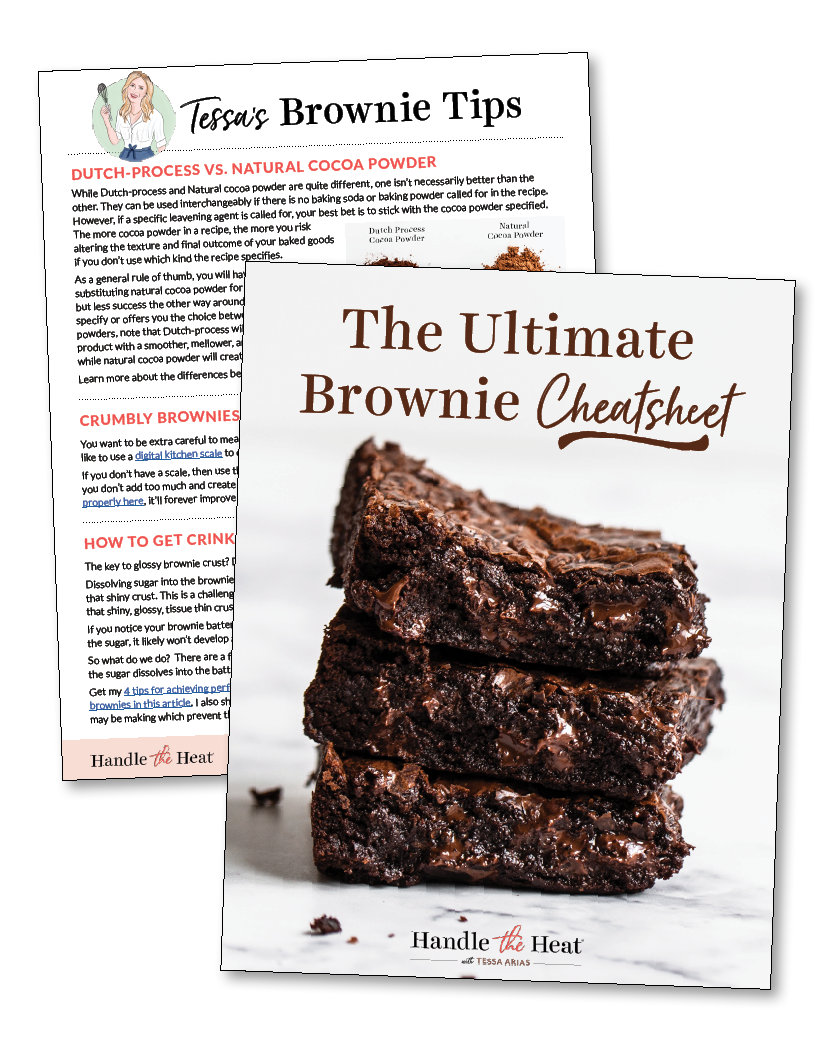
Frustrated with blah brownies?
This cheatsheet has everything you need—from essential tools to foolproof tips plus two crave-worthy recipes—to help you master perfect brownies every time!
That is why I went on a quest to discover which brownie ingredients and techniques produce which results. In a crazy whirlwind of brownie baking, I made seven batches of brownies in a scientifically-inspired kitchen experiment. I used an adapted version of the well-known Baker’s One Bowl Brownie recipe as my control and tested the effects of cake flour, cocoa powder, brown sugar, oil and cocoa powder, an extra egg yolk, and whipped eggs and sugar. I used the same ingredients, utensils, and bakeware, when applicable, and maintained a 350°F oven and a 20 minute baking time for each batch to ensure accurate testing. Take a look at the results, I hope they help you discover the tricks to making your version of the perfect brownie!
Control Recipe
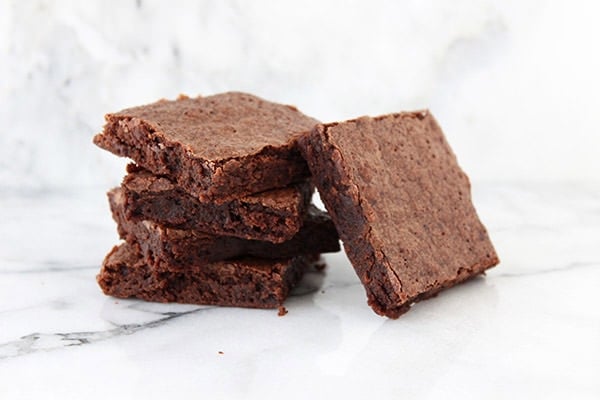
Ingredients:
2 ounces unsweetened chocolate
6 tablespoons (3 ounces) unsalted butter
1 cup granulated sugar
2 large eggs
1/2 teaspoon vanilla
1/2 teaspoon fine sea salt
1/2 cup all-purpose flour (2.25 ounces or 63 grams)
Directions:
Preheat the oven to 350°F. Line an 8×8-inch pan with foil, leaving an overhang on all 4 sides. Spray with nonstick cooking spray.
In a large microwave-safe bowl, microwave the chocolate and butter on high in 30 second bursts, stirring between each burst, until the mixture is melted. Let cool slightly. Stir in the sugar. Mix in the eggs and vanilla. Stir in the salt and flour until combined. Pour into the prepared pan.
Bake for 20 minutes, or until a toothpick inserted in the center comes out with moist crumbs attached. Cool completely before cutting into squares.
Cake Flour:
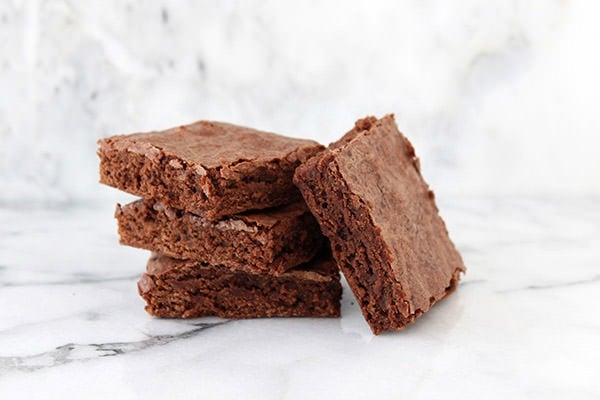
For this test I substituted the 1/2 cup (2.25 ounces) of all-purpose flour called for in the recipe with 1/2 cup of sifted Swans Down brand cake flour, which weighs 1.75 ounces after sifting. Everything else in the recipe was left as is. The brownies were lighter and softer, as you might expect. They were also less rich and dense.
If you’re wondering what cake flour is, it is a very fine-textured flour with a low protein content, usually about 8 percent. All-purpose flour has a protein content of around 10-12 percent, depending on the brand. The lower protein content in cake flour usually gives baked goods very tender and fine textured results, which is why it’s perfect in cake recipes. In brownies, however, I found that using cake flour produced results that were too soft and cake-y and not nearly rich or fudgy enough. If you prefer a more tender and cake-y brownie, using cake flour is definitely the way to go.
Cocoa powder:
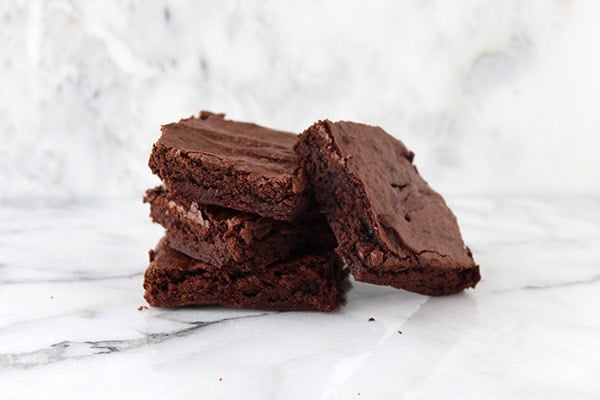
There are two main families of brownie recipes; those that call for melted chocolate and those that call for cocoa powder. Sometimes a recipe will call for both, but the Baker’s One Bowl Brownie recipe calls for melted chocolate. I wanted to see how using only cocoa powder would affect the brownies. I removed the melted chocolate in the recipe and replaced it with 3/4 cup of natural unsweetened cocoa powder, keeping everything else the same. The resulting brownies were nice and chewy with that distinct cocoa flavor, but they were also much more dry and crumbly. The melted chocolate certainly provides moisture and without it, the brownies were quenched. My go-to cocoa brownie recipe uses a whopping ten tablespoons of butter, as opposed to the control recipe’s six tablespoons. Cocoa brownies are quick, easy, and chewy, but they require more butter to maintain a moist, fudgy bite.
Brown Sugar:
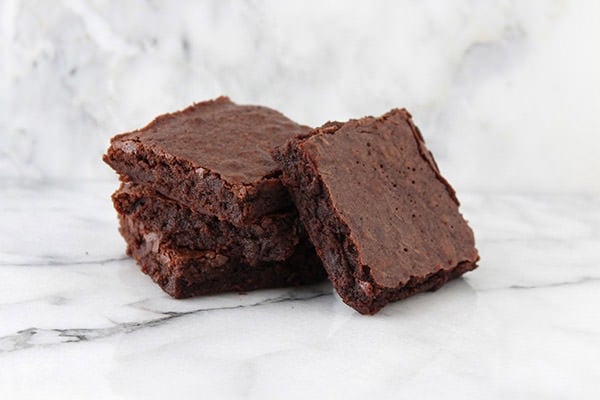
Most brownie recipes call for only granulated sugar, although some call for a ratio of both granulated and brown sugars. I love brown sugar and feel that it adds a depth of sweet flavor and moisture to baked goods so I thought it would be perfect to test how brown sugar affects brownies. I replaced the 1 cup of granulated sugar with 1 cup of packed light brown sugar and the resulting brownies were soft, rich, and ultra moist. They were also slightly thicker and darker in color than the control recipe. The one thing they were lacking as compared to the control brownies (and later the whipped egg and sugar brownies) was that crinkly, tissue-thin crust that is so characteristic of brownies. The brown sugar adds too much moisture to allow the tops the dry out enough to produce that crust.
Oil and Cocoa:
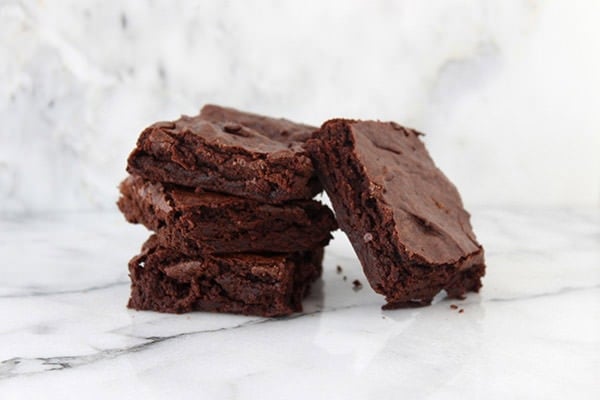
The idea behind this particular brownie test was to recreate the elements behind boxed mix brownies. Many of us grew up eating brownies made from a box and there’s definitely something appealing about their chewy texture and cocoa flavor. In an attempt to replicate those boxed brownie characteristics, I replaced the 6 tablespoons of butter with a 1/3 cup of vegetable oil and replaced the 2 ounces of unsweetened chocolate with 3/4 cup natural unsweetened cocoa powder. The results were very similar to box mix brownies in flavor, texture, and appearance. They were soft yet chewy with a light cocoa flavor that lacked the chocolate intensity of a more rich or fudgy brownie. They were also lacking moisture and were almost crumbly. My assessment of making brownies using both cocoa and oil is that they definitely require more moisture either in the form of fat, such as adding a touch more oil or an extra egg yolk, or in the form of water.
Egg Yolk:
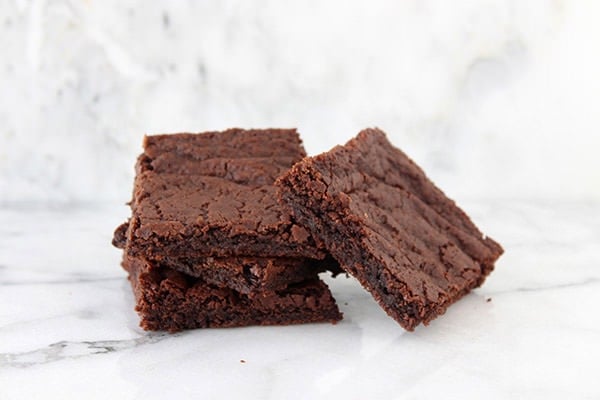
In the notes for the Baker’s One Bowl Brownie recipe it directs bakers to use an additional egg to make for more fudgy brownies. Knowing that fatty egg yolks add richness while the lean egg whites tend to produce a more cake-like texture in baking, I wanted to see just how fudgy an extra egg yolk would make these brownies. In addition to the two large eggs called for in the recipe, I added an additional egg yolk, keeping everything else the same. The egg yolk brownies were supremely dense, moist, dark, and ultra chewy. Like the brown sugar brownies, these egg yolk brownies had way too much moisture to produce that crinkly, tissue-thin crust. They were also on the thin side. If you want to add richness to your brownies and make them more fudgy and chewy, adding an extra egg yolk is definitely the way to go.
Whipped Eggs and Sugar:
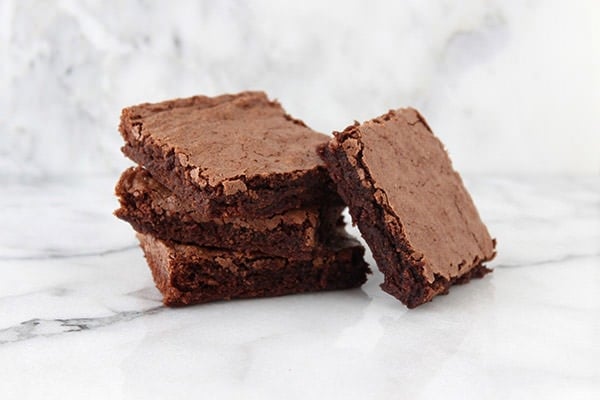
Finally, for my last round of brownie testing, I decided to experiment with the more unique technique of beating the eggs and sugar for 3 to 5 minutes with an electric mixer until they were pale, thick, and fluffy. After insuring the sugar was well dissolved into the eggs, I added the cooled melted butter and chocolate mixture and vanilla then proceeded with folding in the salt and flour. The results were interesting. These brownies were rich, fudgy, and chewy, but had a lightness about them that none of the other brownies had. Plus they had a beautiful crinkly tissue-thin crust on the top that I loved. I must admit that while I enjoyed certain characteristics of all the other brownies in this kitchen experiment, these whipped egg and sugar brownies were my favorite.
Final Comparison:
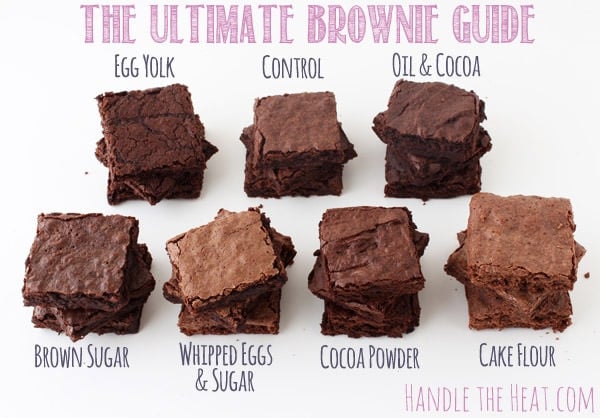
The article The Ultimate Brownie Guide was originally posted at Relish.com
Since we’re on the subject of brownies I figured I’d whet your brownie appetite by rounding up some of my favorite brownie recipes that I’ve posted over the years. Which is your favorite?
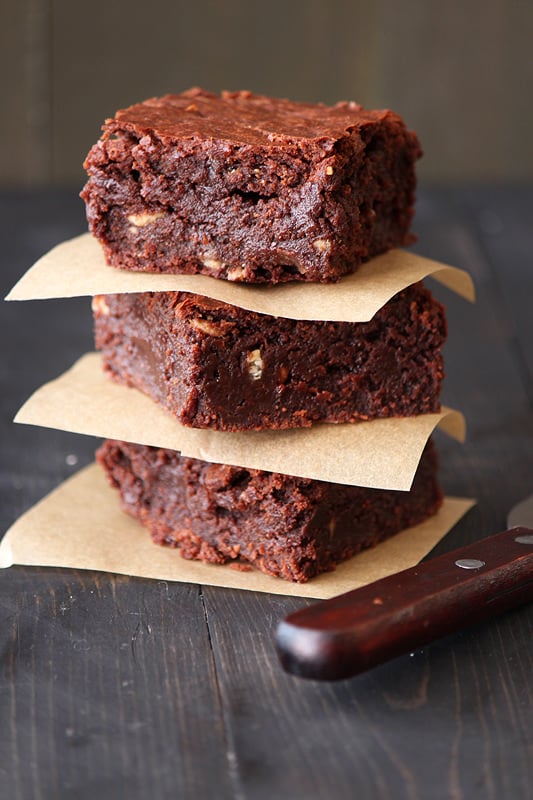
Thick and Fudgy Toffee Brownies
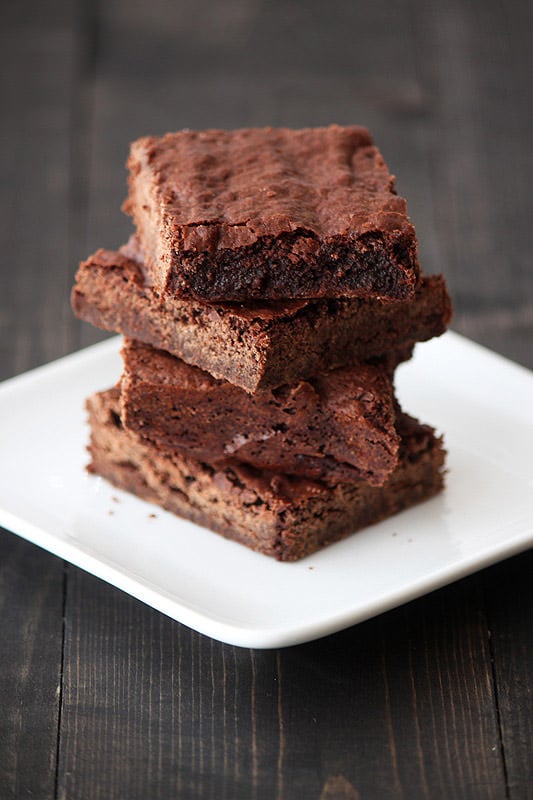
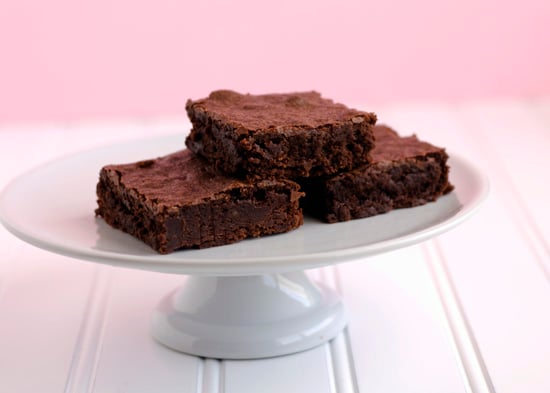
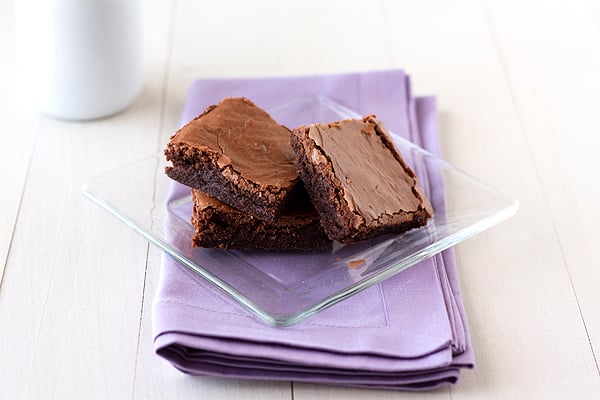
Crinkly Brownies
What’s your ultimate ideal brownie? Do you like them chewy, fudgy, cakey, or something else?
Share on Pinterest:
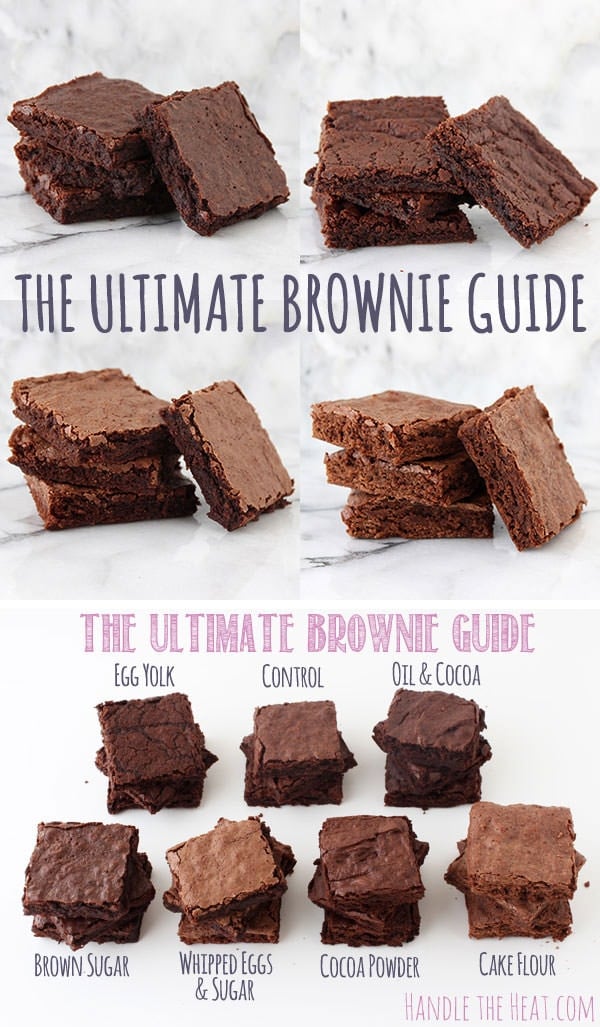
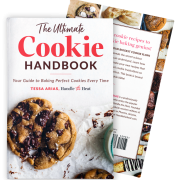
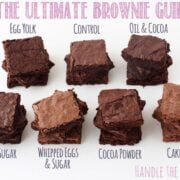
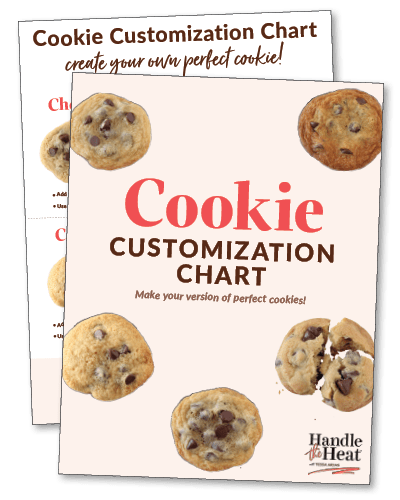
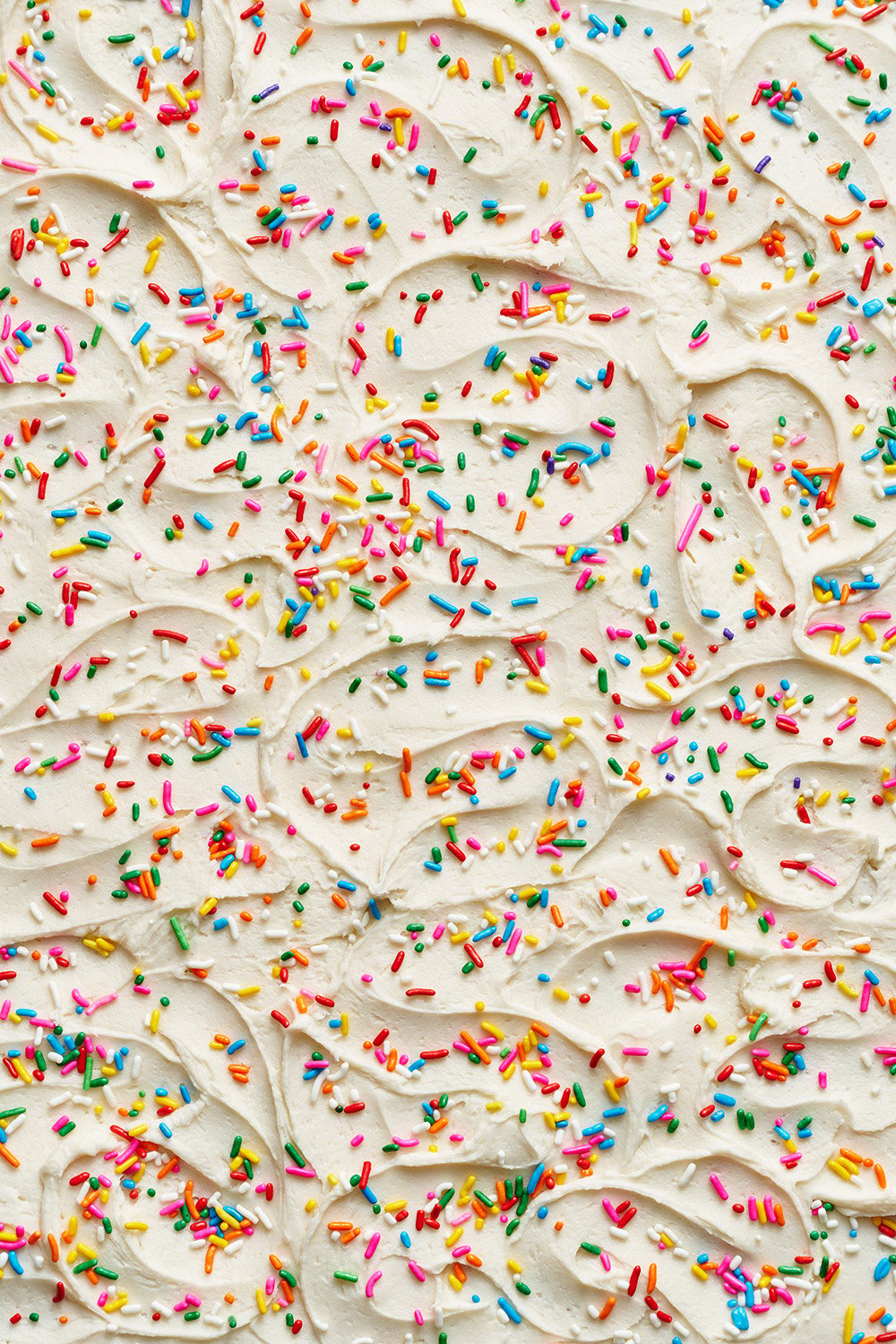
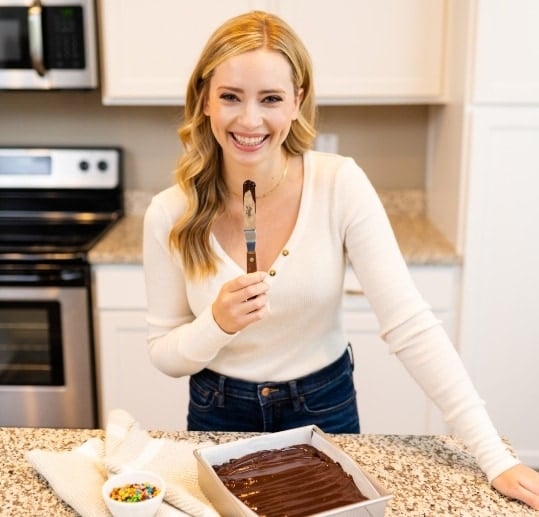


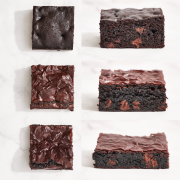
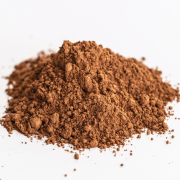
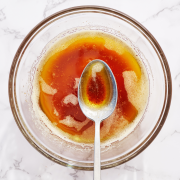

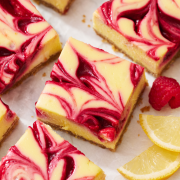
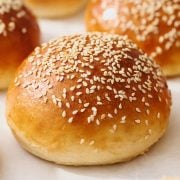
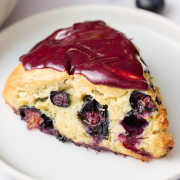








This is a follow-up to Paula’s and Yael’s question/comments. I, too, wondered how you came up with 3/4 cup of cocoa to replace the 2 oz of baking chocolate. I’m not at all surprised that the brownies you substituted cocoa in were dry and crumbly. Baking chocolate is just that-chocolate. What does chocolate have in it? Cocoa butter! I have a recipe that my Mom gave me that calls for baking chocolate. In her notes she says “if substituting cocoa powder use 3 level tablespoons cocoa + 2 tablespoons of butter per square”. The cocoa butter must be replaced with something or you will get nowhere near the same results. I hope you’ll retry the cocoa ones with the proper ingredients to see how they really come out. 🙂 I love your guide though.
Hey how many eggs white if use the whipping egg white method? And what about the eggs yolk?
I am a big proponent of the cocoa/oil brownies. Everything truly goes into one bowl quick and easy – no melitng required. Not that I am an expert or anything, but it seems your substitution of cocoa for chocolate was way off. You’d need much less cocoa and a bit more fat to achieve deliciously moist cocoa/oil brownies. As the experts say and I paraphrase, an equal amount of cocoa is more intensely “cocoa-flavored” than the same amount of unsweetened chocolate, BUT lacking in fat. In your control recipe, I would have used 1/3 cup cocoa and 1/2 cup oil. Thanks for your super guide!
This is helpful, thank you! I like my brownies thick with a crinkly top, fudgy, and not dense. The oil and cocoa ones look absolutely delicious! I need to experiment with a gluten free, vegan version of those!!
If I will add some Chocolate chips of any flavor or some different kinds of nuts will it still affect the texture of brownies? Thanks! 🙂
Nuts will definitely affect the texture! You should be able to add any kind of mix-ins you’d like as long as they’re about the size of chocolate chips.
If I will add some Chocolate chips of any flavor or some different kinds of nuts it still affect th
I no longer use vegetable oil in my baking-it’s either butter or coconut oil.
Have you tried this recipe substituting the fat with either of these?
The control recipe here is made with butter and I have another brownie recipe which uses coconut oil here: https://handletheheat.com/coconut-oil-brownies/
The Whipped Eggs and Sugar one looks/sounds like my perfect preference of brownies! I love them a little chewy, fudgy and the crinkly sugar crust. I love these variations/experiments of baked goods you do (such as the chocolate chip cookie one)–saves me on a lot of batches of trying to determine the recipe for me. Thank you for sharing!
Thanks for sharing this guide. The fudgy ones are my favorite.
Thanks for this great guide. My favorite brownie is the fudgy, I can say I love all of them. Thanks for sharing.
This compilation looks awesome. Have you ever tried making Brownie Brittle? They are these crunchy brownie-like cookies…oh so good. Any ideas?
I just got a bag at a blogging retreat a week ago! My first time experiencing it. I’ll have to experiment with making a homemade recipe for the stuff.
Wow, I can’t believe it! In 2004, I learned what brownies are. Since then, I tried getting them right. 10 years later, and I finally did it! This guide is perfect, thank you! 😀